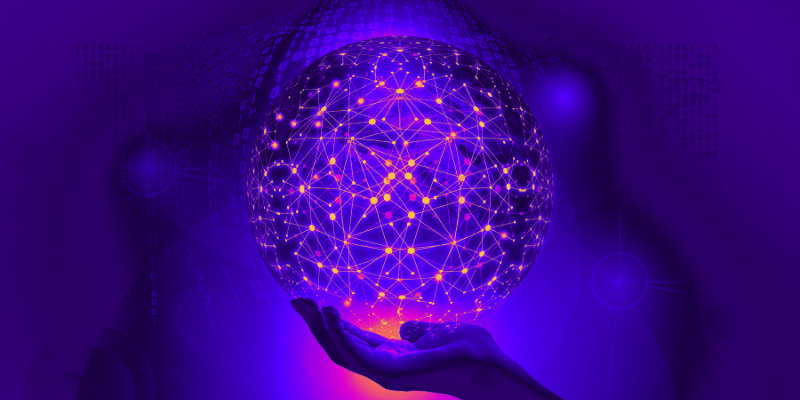Customer loyalty is the lifeblood of any successful business. As we navigate the digital age, loyalty programs have become a cornerstone in fostering and maintaining customer relationships. This new paradigm goes beyond the traditional flywheel of acquisition and engagement. It introduces a holistic approach encompassing retention and community contributions, creating a robust foundation for long-term brand loyalty.
What is Loyalty and Why It Matters?
Lets start with some facts. For the vast majority of businesses revenue split follows the Pareto principle, whereby 80% of the revenue is generated by 20% of the most loyal customers. More than 90% of loyal customers are net promoters and 50% of them are likely to stick around even past one bad experience. As a result of above and other factors means that 1% increase in loyal customer base generally leads to 4-5% increase in revenue.
In a Zippia study, 75% of consumers express their readiness to switch brands for a superior loyalty program. Furthermore, 75% prefer companies offering rewards, and 85% of Millennials believe loyalty programs enhance their brand experience. Additionally, 34% of consumers find participating in online groups fosters a sense of community around their favorite brand, especially true for younger generations seeking personal connections.
Got your attention?
Let’s take a step back
In the 1800s, companies like the Grand Union Tea Company introduced a ticket system. Customers received tickets with coffee and tea purchases, enabling them to redeem rewards such as an Oak Chair or a dinner set. This early system, akin to modern points, allowed customers to choose their preferred rewards.
Jumping to the 1980s, airlines like American Airlines pioneered mileage-based programs. Accumulate enough miles, and customers could enjoy a free flight – a novel concept back then. However, with the passage of time, some of these programs have become stagnant. In today’s diverse market, customers have abundant choices at their fingertips, making it crucial for loyalty programs to stay captivating.
With all of that said, customer loyalty is not just about repeat business; it’s a holistic concept encompassing trust, satisfaction, and emotional connection. As shown previously, loyal customers not only contribute significantly to current revenue but also act as brand advocates, driving new business through word of mouth.
And it’s not all smooth sail either, as loyalty programs do have their struggles. These include a lack of transparency in reward systems, limited interoperability, centralization-related security concerns, inflexible program designs and bonus abusers.
This is where Web3 comes in…
In Web3, loyalty transcends traditional boundaries. It’s about empowering communities to evolve from consumers to brand builders, fostering authentic connections. Loyalty programs, tracing back to S&H Green Stamps and airline miles, have a rich history evolving with the times. Web3 introduces transparency and security through blockchain, giving users genuine ownership of loyalty tokens.
Leading brands like Starbucks, Lufthansa, Nike, Visa and Salesforce recognize Web3’s potential, making loyalty a promising application of the technology. More on that in the future articles, stay tuned. Web3, powered by NFTs, transforms loyalty programs with fresh use cases and enhanced rewards. Thanks to Web3, loyalty programs experience a resurgence, adapting to the ever-evolving consumer landscape.
How Web3 Solves Loyalty Program Issues:
- Transparency through Blockchain: Blockchain technology ensures transparency by providing an immutable and verifiable ledger of transactions. Thus increasing the levels of trust and reducing the possibilities for cheating and bonus abuse.
- Interoperability and Tokenization: Loyalty rewards are generally very limited in transferability and lack a sense of true ownership. Web3 enables the seamless transfer of loyalty tokens across platforms, breaking down silos.
- Decentralization and Data Security: The decentralization of user data storage mitigates security concerns. Companies adopting Web3 loyalty program architecture can enhance data security and build consumer confidence.
- Flexibility and Smart Contracts: Smart contracts in Web3 loyalty programs offer unparalleled flexibility. This means that businesses can use smart contracts for customizable rewards, adapting to the ever-changing needs and landscapes.
Delving deeper, it is becoming evident that Web3 ecosystems are instrumental in reshaping loyalty programs. Let’s see what others have to say.
Web3’s Open Ecosystems and Collaborative Loyalty Programs
As explored in “Beyond the Hype: Web3, NFTs & Loyalty Programs“, Web3 enables loyalty programs to extend beyond the confines of a single brand. This extension fosters partnerships and collaborations, creating a network effect that amplifies the impact of loyalty initiatives.
Transitioning Loyalty Programs from Web2 to Web3 with NFTs
An insightful perspective is provided in “Transitioning from Web2 to Web3 Loyalty Programs“. This article delves into the benefits NFTs (Non-Fungible Tokens) bring to reward programs. It explores how NFTs enhance traditional loyalty approaches, offering a unique and personalized dimension to customer rewards.
The Revolutionising Power of Web3 Digital Rewards
Even Forbes highlights the revolutionary impact of Web3 on customer loyalty in “How Web3 Will Revolutionize Customer Loyalty“. By leveraging digital rewards and collectibles, companies can significantly increase loyalty.
Visa Innovates Customer Loyalty with Web3 Engagement
Visa has recently unveiled a cutting-edge Web3 Loyalty Engagement Solution, revolutionizing customer loyalty in the digital realm. This innovative platform introduces gamified rewards and immersive digital experiences, marking a significant shift in the traditional loyalty landscape. By leveraging Web3 technology, Visa aims to empower brands to create engaging and interactive loyalty programs. The solution integrates gamified giveaways and immersive treasure hunts, offering a unique and captivating approach to customer engagement. This strategic leap into Web3 demonstrates Visa’s commitment to staying at the forefront of customer-centric solutions, ushering in the next evolution of loyalty programs.
Unveiling Salesforce Web3: Bridging the Gap Between CRM and the Blockchain
Salesforce has delved into the realm of Web3 with a revolutionary solution designed to seamlessly integrate Web2 and Web3 channels. Branded as Salesforce Web3, this innovative platform is powered by Salesforce Customer 360, aiming to create a cohesive experience for users across both web paradigms. Salesforce Web3 goes beyond conventional CRM capabilities by introducing tools to create, manage, and deploy non-fungible tokens (NFTs) in a trusted, scalable, and sustainable manner. The platform is built on blockchain technology, providing enhanced security, validating user data, ensuring transaction transparency, and offering more secure payment options . Additionally, Salesforce has introduced a specific product category for Web3, featuring products like the NFT Cloud, rebranded as NFT Management, exemplifying its commitment to staying at the forefront of technological advancements.
Revolutionising Loyalty: Shopify Web3 Loyalty Programs
Shopify is at the forefront of integrating Web3 technology into loyalty programs, offering innovative solutions to enhance customer engagement. Various apps, such as Uptop, provide a no-code Web3 loyalty solution for Shopify stores. This solution enables token-gated promotions, extending them to different blockchain networks like Ethereum and Polygon, fostering a new dimension of loyalty rewards for customers. Co:Create has taken a significant step by releasing a Web3 Loyalty App on Shopify. This app empowers over 4 million Shopify businesses to implement blockchain-based loyalty and rewards programs directly from their storefronts, creating an immersive and secure loyalty experience for customers. Furthermore, TYB and Shopify collaborate to bring a Web3 Loyalty Platform to major consumer brands. This platform allows merchants to connect directly with their audience, rewarding them for valuable actions through community-integrated-commerce tools.
Conclusion
The future of loyalty lies in the dynamic integration of Web3 technologies, collaborative ecosystems, and innovative approaches. Brands that embrace this evolution are poised to create unparalleled loyalty experiences, ensuring a lasting connection with their customer base.
This transformation is not just theoretical; it is actively reshaping how businesses reward and engage with their customers. Web3 loyalty programs, fuelled by NFTs, are at the forefront of this paradigm shift. They provide transparency, security, and a sense of true ownership of loyalty tokens, mitigating challenges like reward system opacity and limited interoperability. Brands such as Starbucks, Lufthansa, Nike, Visa, Salesforce, and Shopify have recognized the potential, embracing Web3 to adapt their loyalty initiatives to the ever-evolving consumer landscape.
As we move forward, the impact of Web3 on loyalty programs is poised to be a game-changer. By fostering collaboration, transparency, and innovation, Web3 loyalty programs are creating a new standard in customer engagement and loyalty across diverse sectors.
Want to Discuss Web3 Loyalty Programs?

Let’s talk
Complete the quick form below and the ColdChain team will come back to you to discuss your web3 loyalty requirements.



![Top Web3 PR Agencies in 2024 [Our Top Picks]](https://coldchain.agency/wp-content/uploads/2024/07/PR-7-600x338.png)